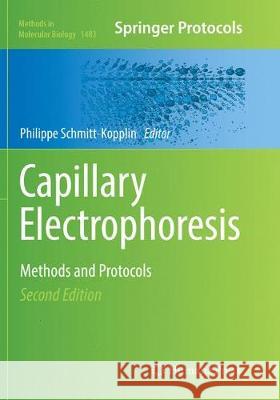Capillary Electrophoresis: Methods and Protocols » książka
topmenu
Capillary Electrophoresis: Methods and Protocols
ISBN-13: 9781493981885 / Angielski / Miękka / 2018 / 527 str.
Kategorie:
Kategorie BISAC:
Wydawca:
Humana Press
Seria wydawnicza:
Język:
Angielski
ISBN-13:
9781493981885
Rok wydania:
2018
Wydanie:
Softcover Repri
Ilość stron:
527
Waga:
0.92 kg
Wymiary:
25.4 x 17.78 x 2.77
Oprawa:
Miękka
Wolumenów:
01
Dodatkowe informacje:
Wydanie ilustrowane











